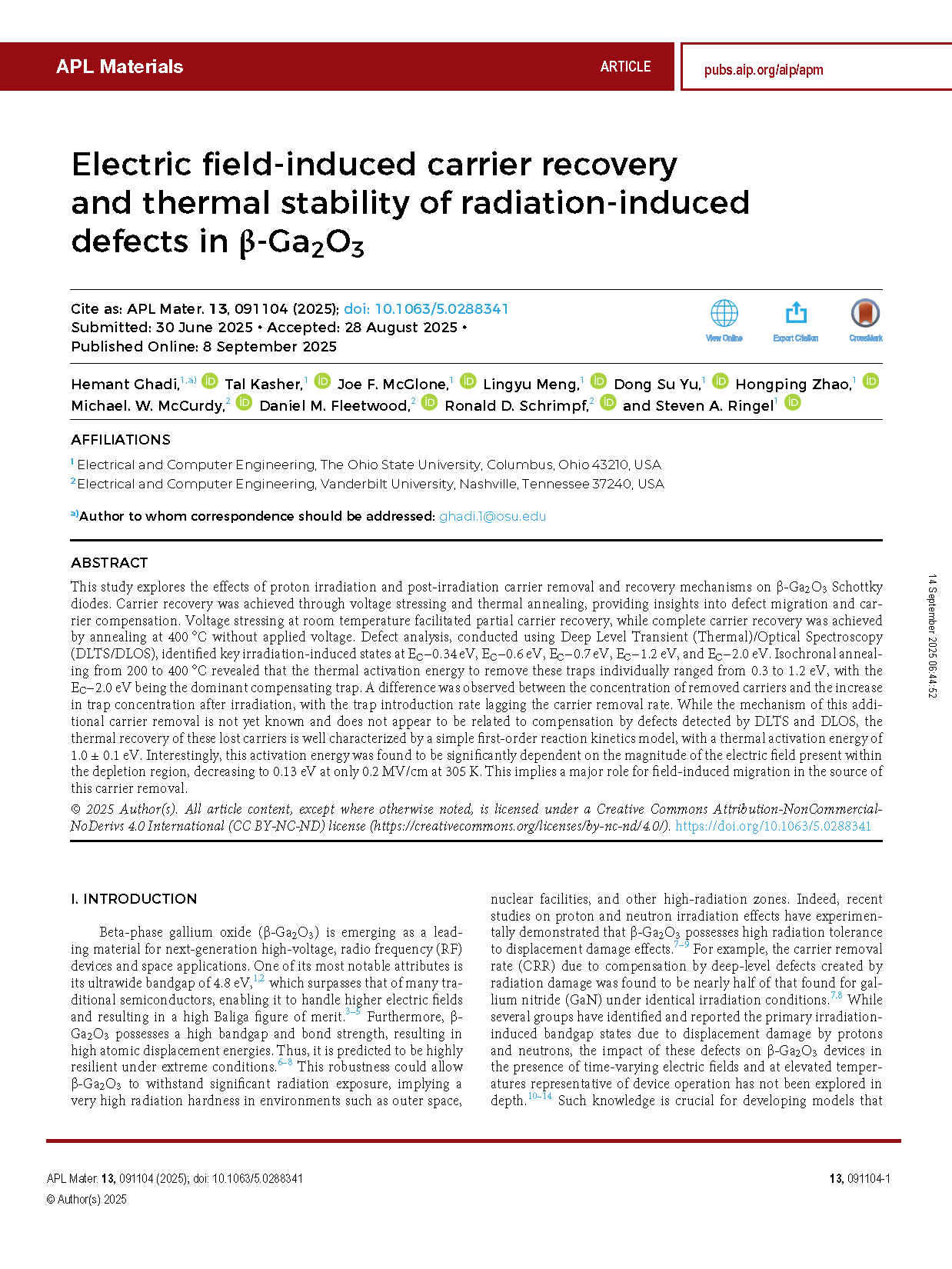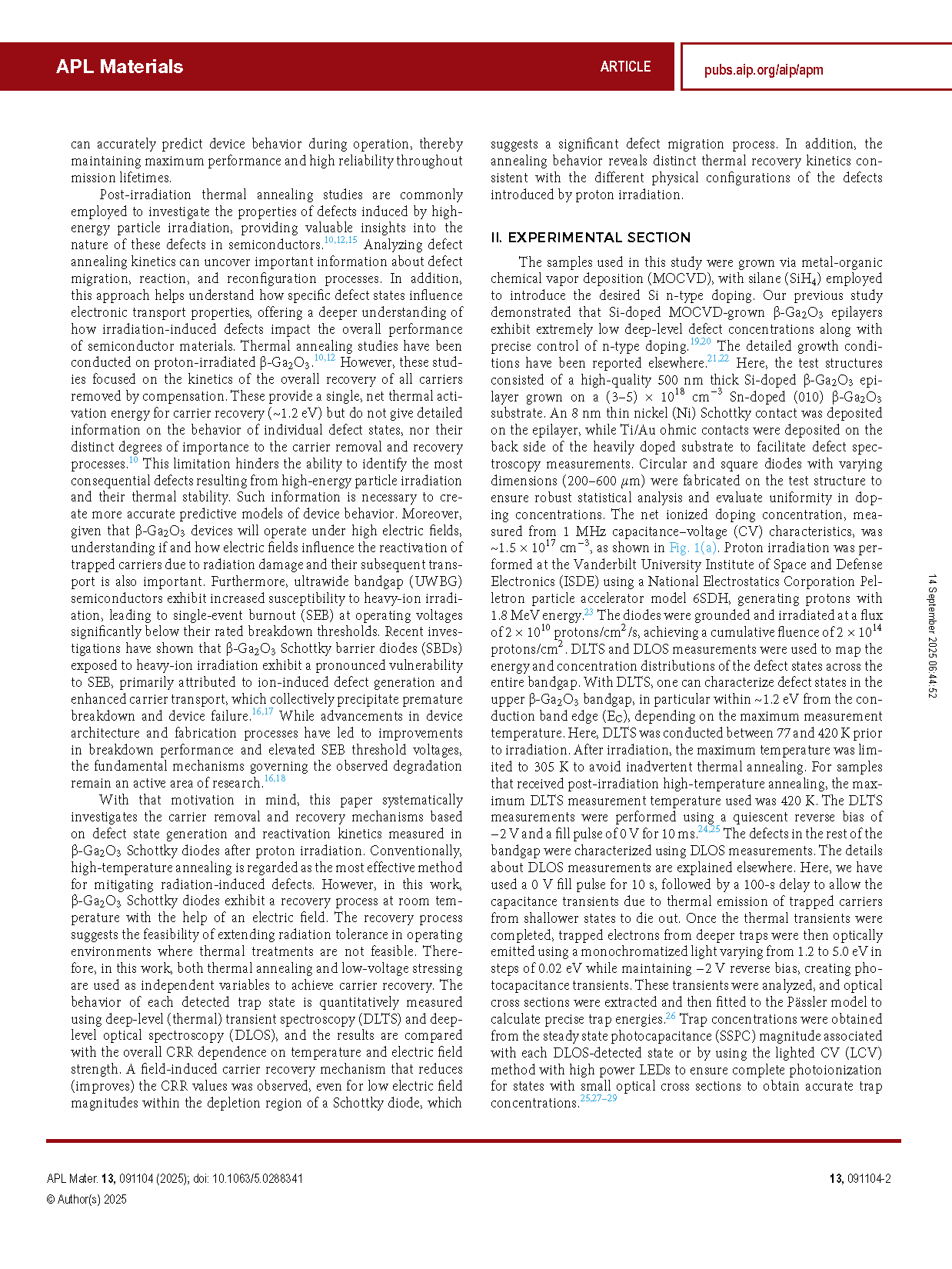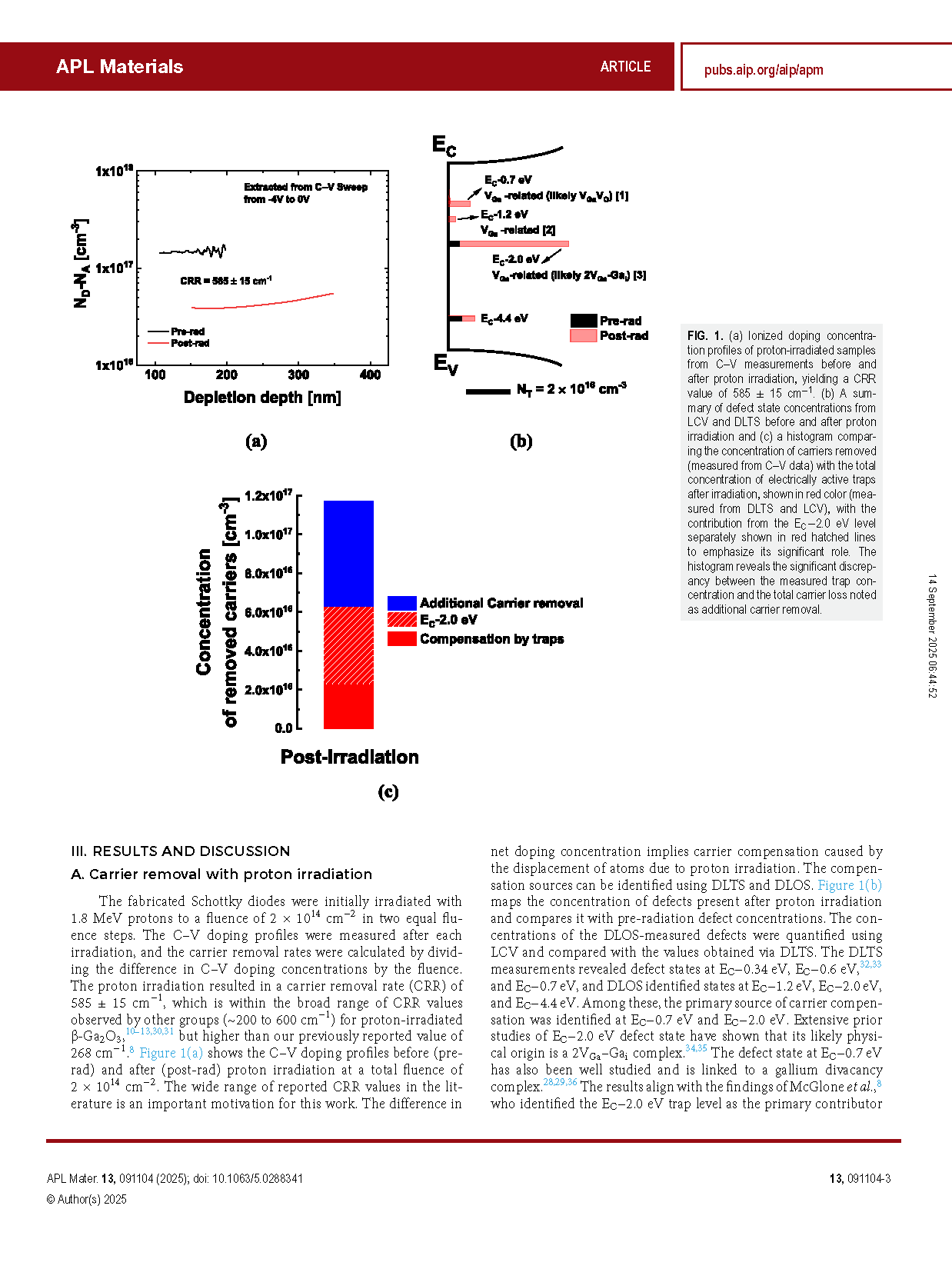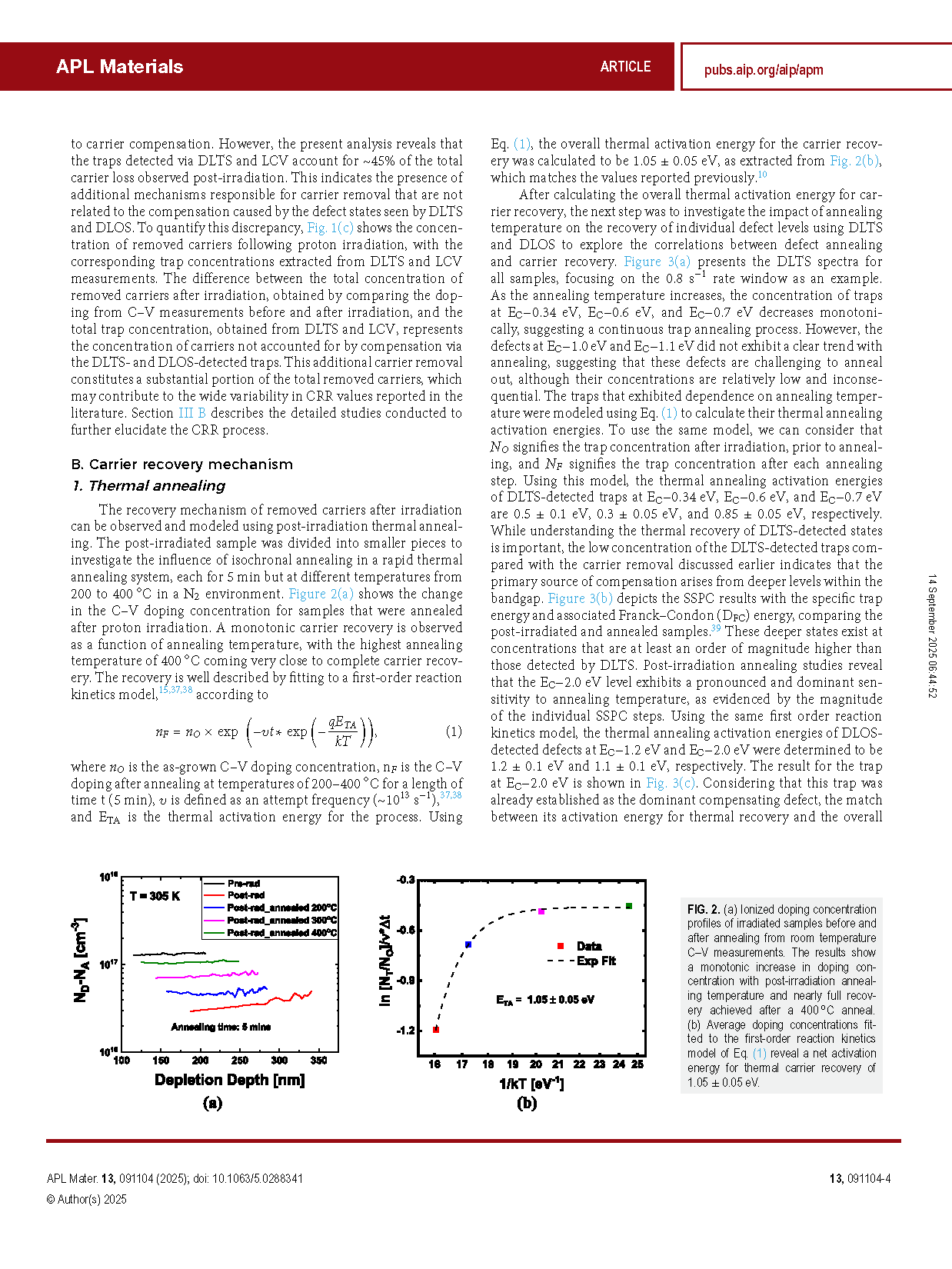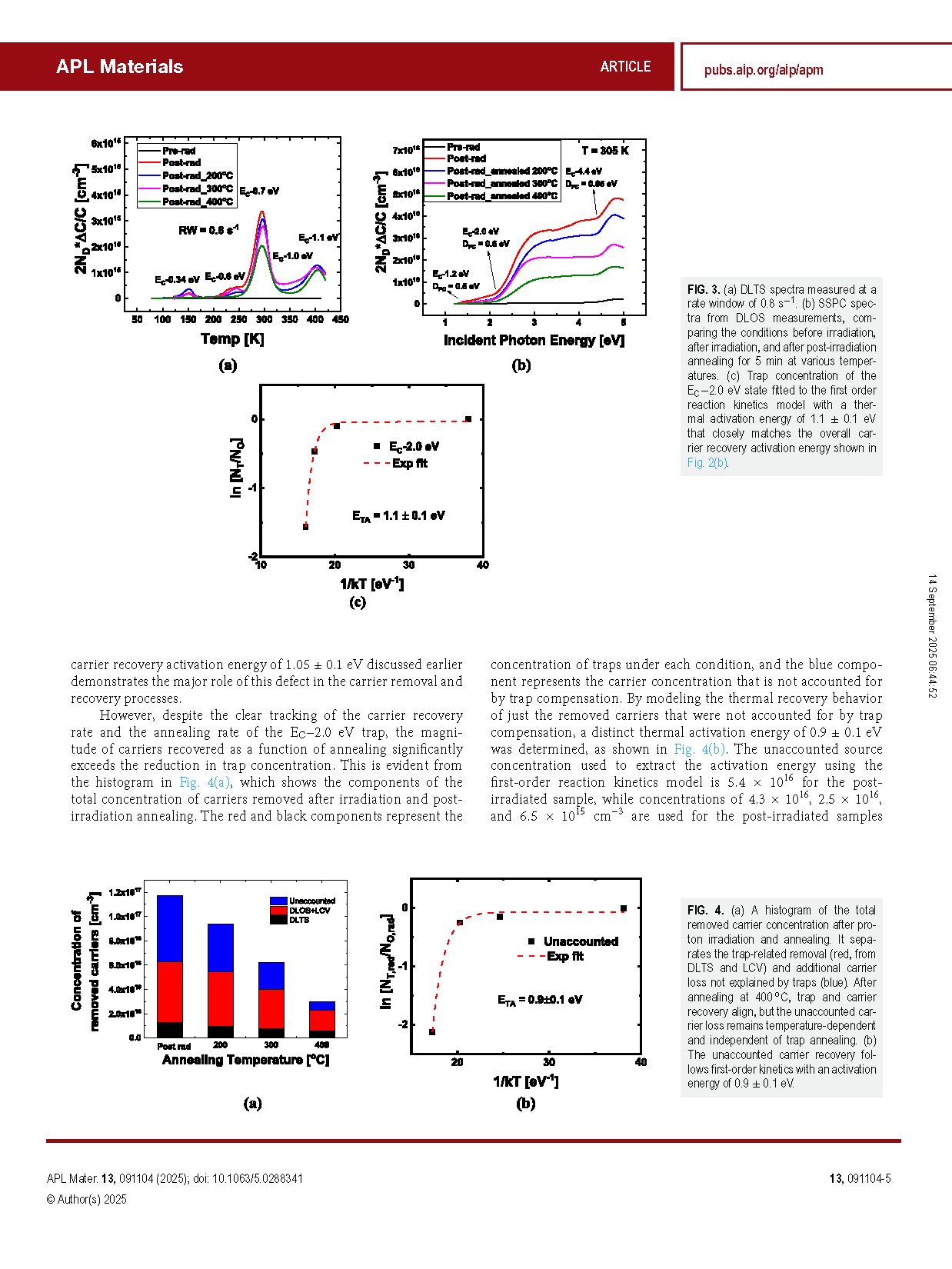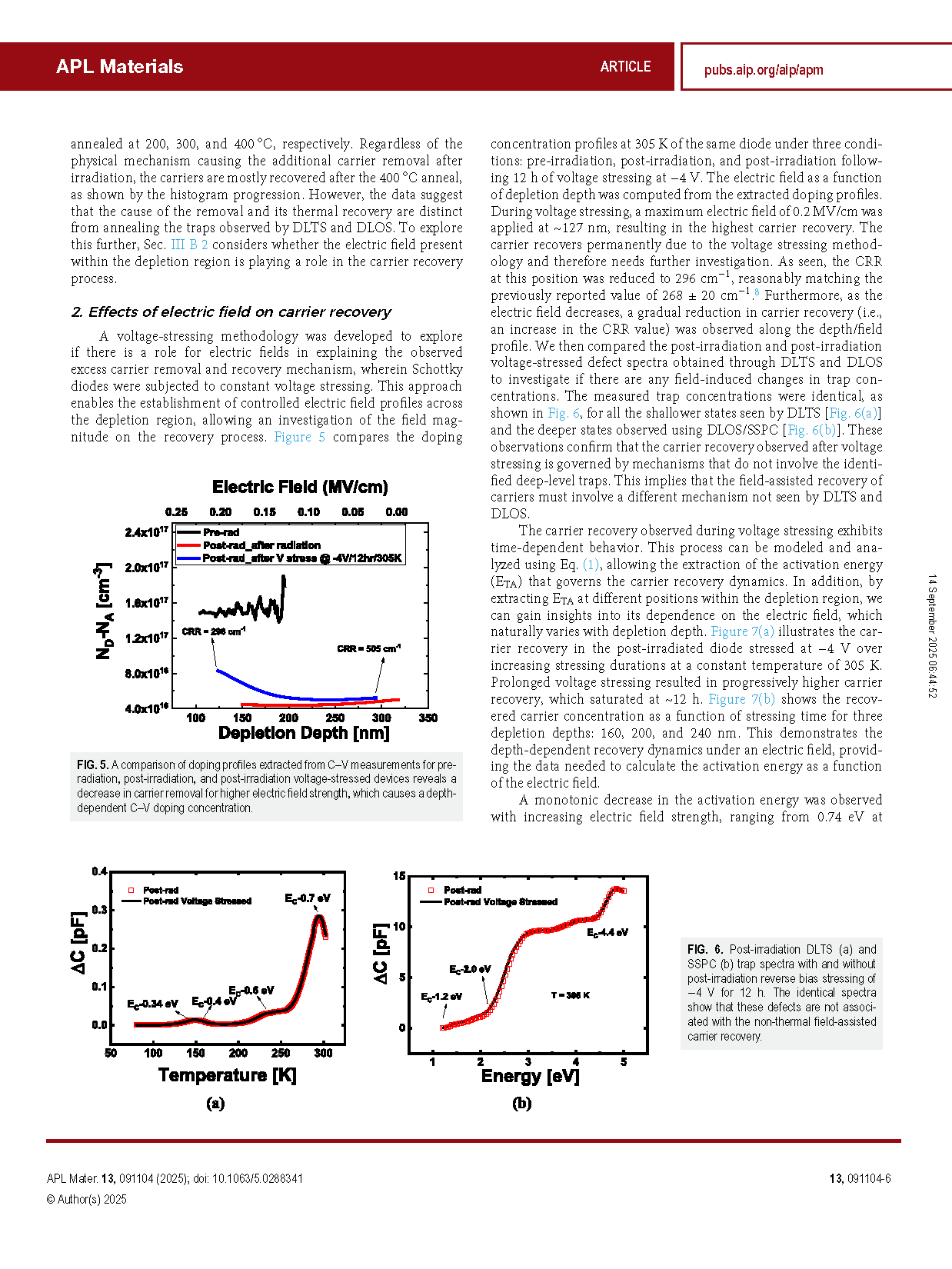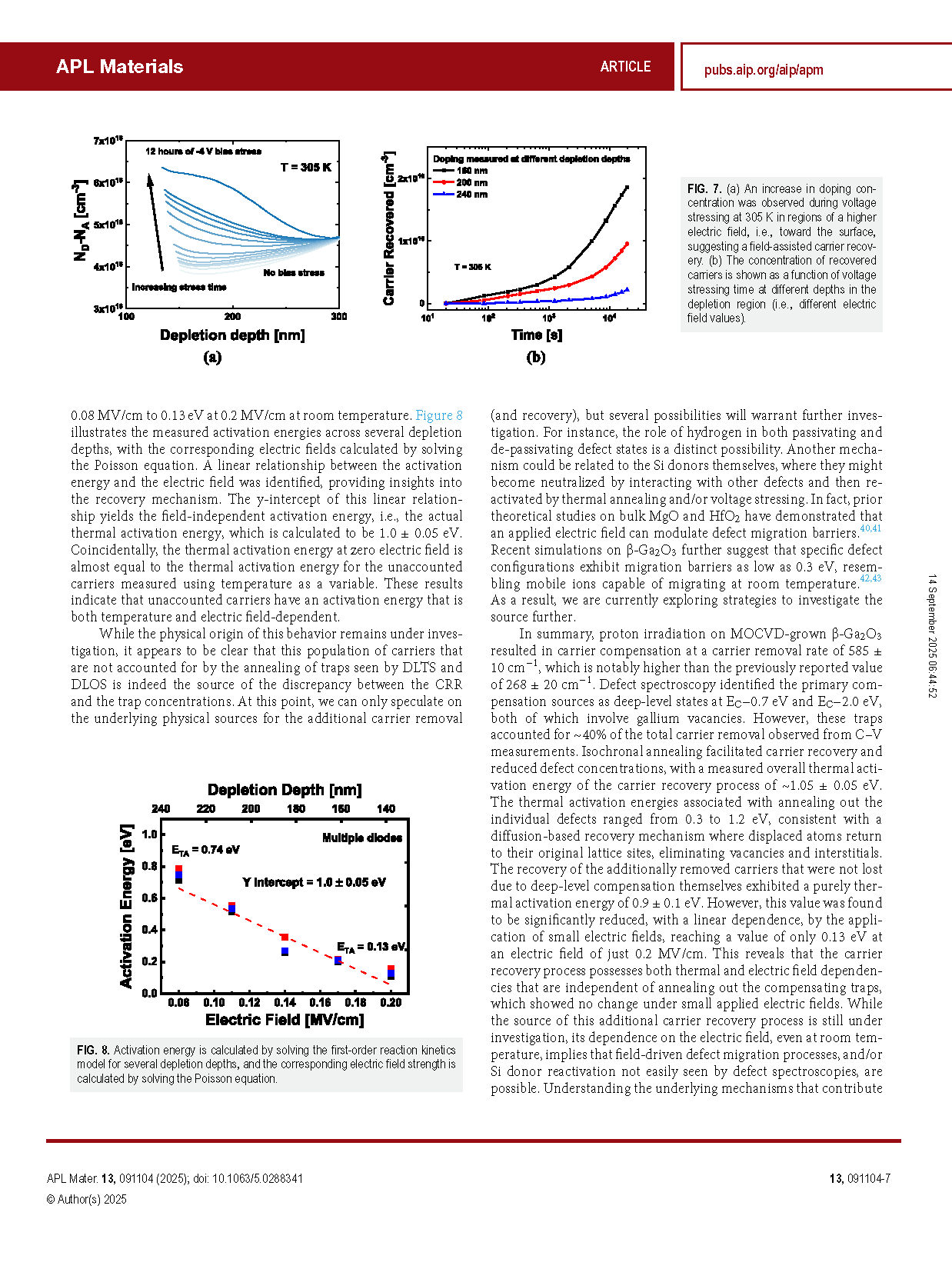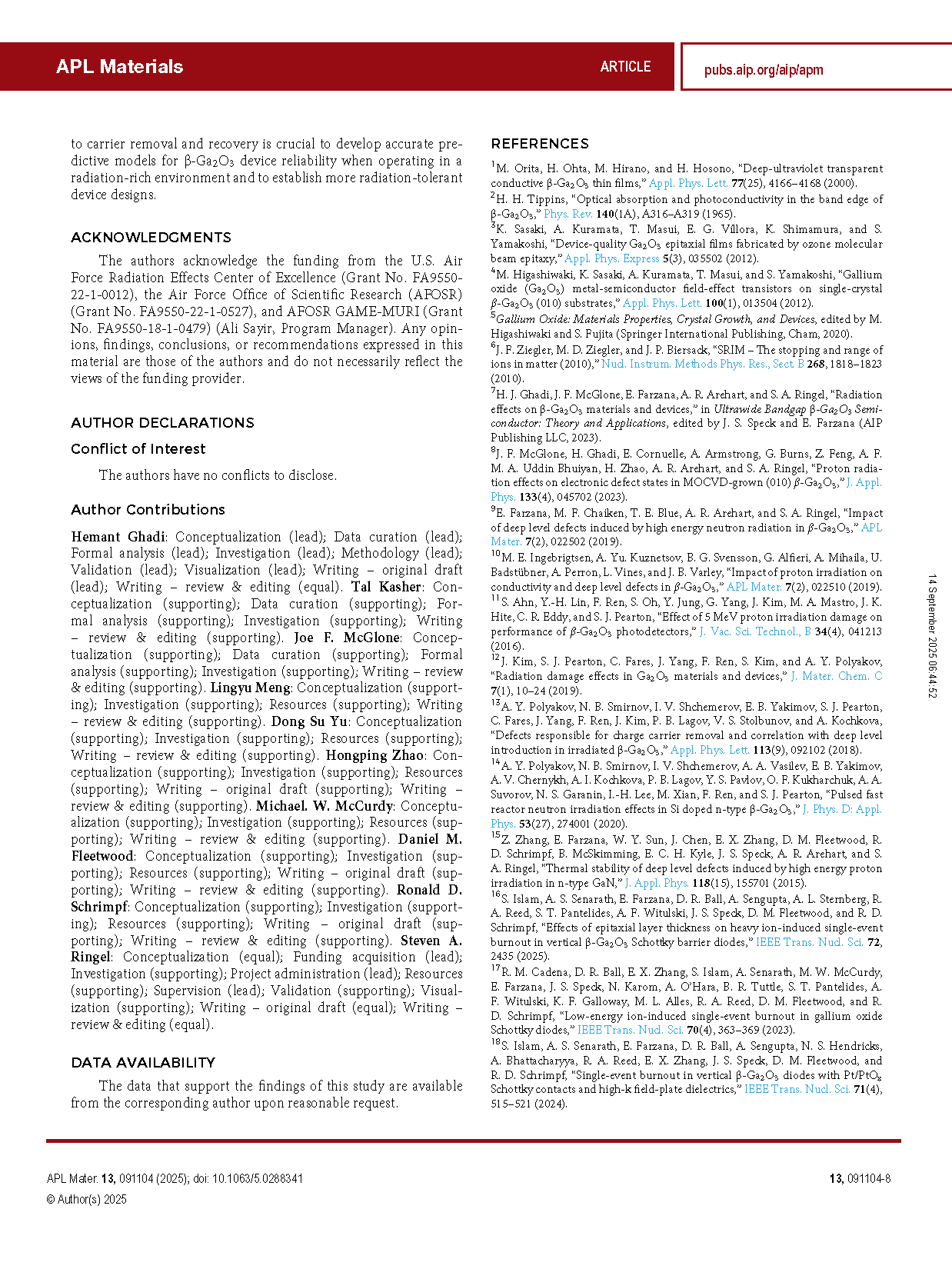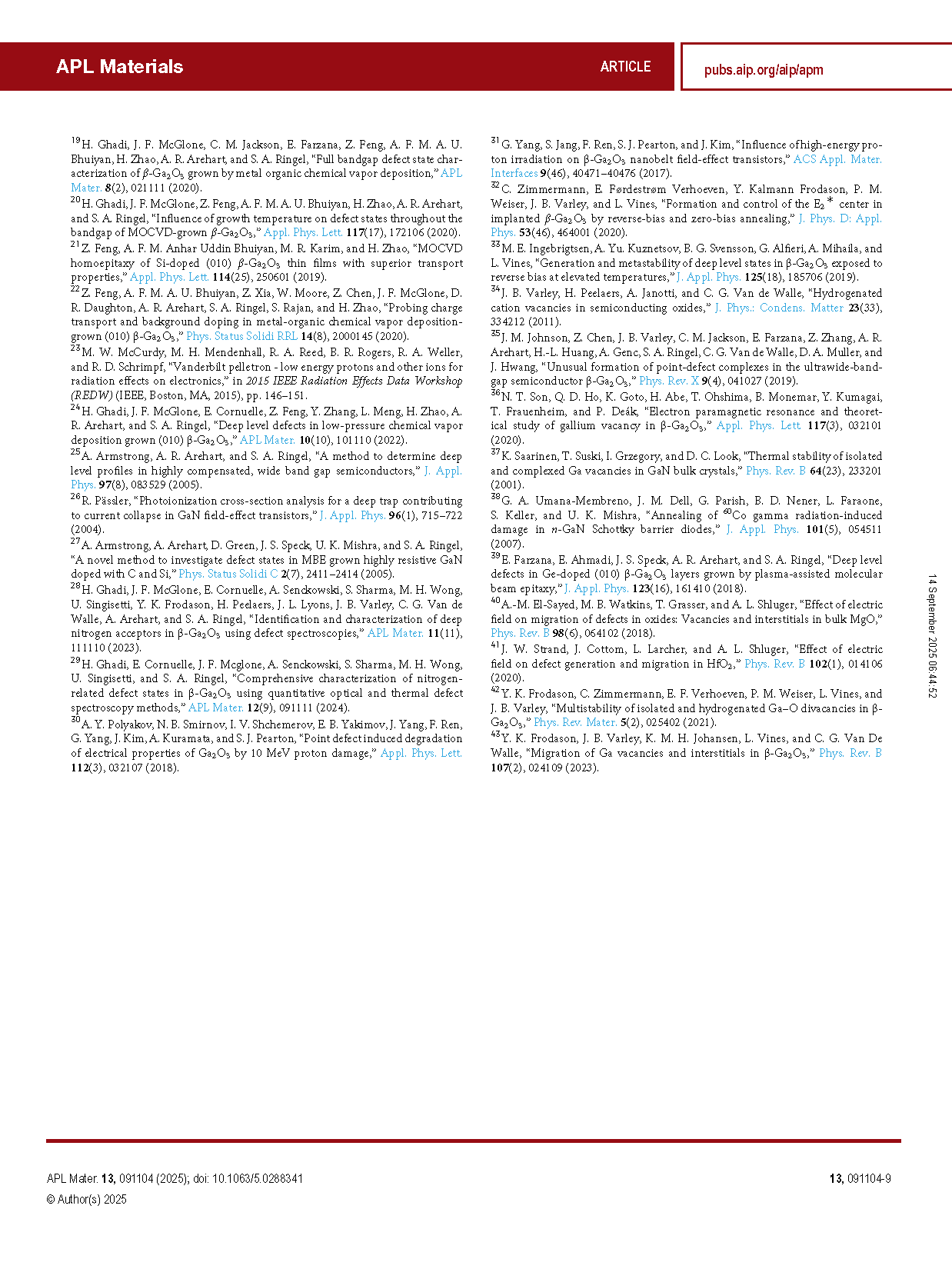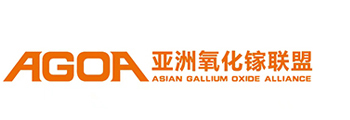

【International Papers】Electric field-induced carrier recovery and thermal stability of radiation-induced defects in β-Ga₂O₃
日期:2025-09-24阅读:191
Researchers from the Ohio State University have published a dissertation titled " Electric field-induced carrier recovery and thermal stability of radiation-induced defects in β-Ga2O3" in APL Materials.
Background
β-Ga2O3, with its ultrawide bandgap of 4.8 eV, high breakdown field, and excellent Baliga figure of merit, has emerged as a promising candidate for next-generation high-voltage, RF, and space applications. Its strong bonding and high atomic displacement energies endow the material with potential robustness under extreme environments, offering remarkable radiation hardness in conditions such as outer space and nuclear facilities. Previous studies have shown that the carrier removal rate (CRR) in β-Ga2O3 under proton and neutron irradiation is nearly half that of GaN, highlighting its superior tolerance to displacement damage. However, although several irradiation-induced deep-level defects have been identified, their detailed impact on device performance under alternating electric fields and elevated operating temperatures remains insufficiently understood.
Post-irradiation thermal annealing is a widely used method to study defect migration and reaction kinetics, thereby providing insights into how irradiation-induced defects affect electronic transport. Yet, existing studies on β-Ga2O3 mainly focus on the overall recovery of carriers, typically reporting a net thermal activation energy (~1.2 eV), without resolving the roles of individual defect states in carrier removal and recovery. This limitation hinders accurate modeling of radiation damage mechanisms. In addition, ultrawide bandgap semiconductors are known to be more susceptible to heavy-ion-induced single-event burnout (SEB) under high electric fields. β-Ga2O3 Schottky barrier diodes (SBDs) have demonstrated significant vulnerability to SEB, underscoring the importance of investigating defect reactivation and migration processes under electric field stress.
Motivated by these challenges, this study systematically investigates defect-state generation and carrier recovery kinetics in proton-irradiated β-Ga2O3 Schottky diodes. By comparing thermal annealing and voltage stressing as recovery pathways, and employing DLTS/DLOS to quantitatively analyze individual defect states, this work provides new insights into carrier removal and recovery mechanisms, laying the foundation for more accurate predictive models of device performance in radiation environments.
Abstract
This study explores the effects of proton irradiation and post-irradiation carrier removal and recovery mechanisms on β-Ga2O3 Schottky diodes. Carrier recovery was achieved through voltage stressing and thermal annealing, providing insights into defect migration and carrier compensation. Voltage stressing at room temperature facilitated partial carrier recovery, while complete carrier recovery was achieved by annealing at 400 °C without applied voltage. Defect analysis, conducted using Deep Level Transient (Thermal)/Optical Spectroscopy (DLTS/DLOS), identified key irradiation-induced states at EC−0.34 eV, EC−0.6 eV, EC−0.7 eV, EC−1.2 eV, and EC−2.0 eV. Isochronal annealing from 200 to 400 °C revealed that the thermal activation energy to remove these traps individually ranged from 0.3 to 1.2 eV, with the EC−2.0 eV being the dominant compensating trap. A difference was observed between the concentration of removed carriers and the increase in trap concentration after irradiation, with the trap introduction rate lagging the carrier removal rate. While the mechanism of this additional carrier removal is not yet known and does not appear to be related to compensation by defects detected by DLTS and DLOS, the thermal recovery of these lost carriers is well characterized by a simple first-order reaction kinetics model, with a thermal activation energy of 1.0 ± 0.1 eV. Interestingly, this activation energy was found to be significantly dependent on the magnitude of the electric field present within the depletion region, decreasing to 0.13 eV at only 0.2 MV/cm at 305 K. This implies a major role for field-induced migration in the source of this carrier removal.
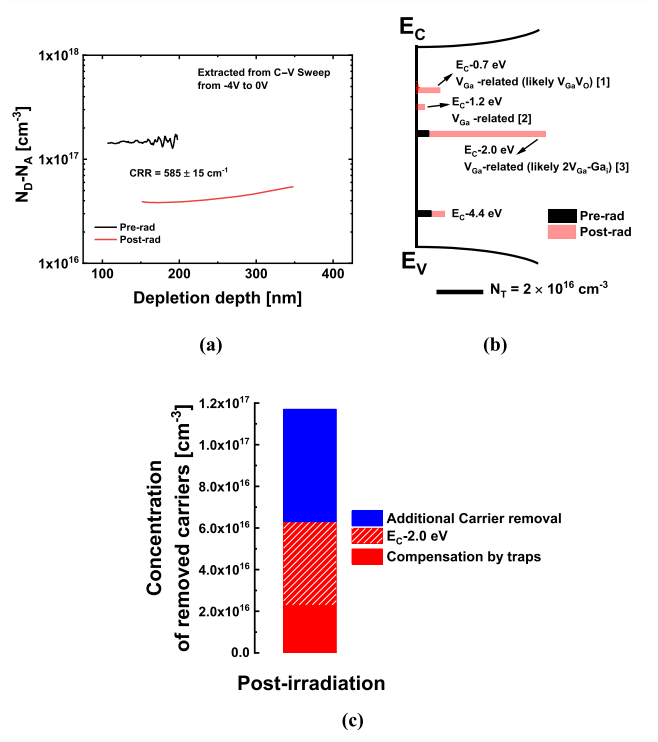
FIG.1 (a) Ionized doping concentration profiles of proton-irradiated samples from C–V measurements before and after proton irradiation, yielding a CRR value of 585 ± 15 cm−1. (b) A summary of defect state concentrations from LCV and DLTS before and after proton irradiation and (c) a histogram comparing the concentration of carriers removed (measured from C–V data) with the total concentration of electrically active traps after irradiation, shown in red color (measured from DLTS and LCV), with the contribution from the EC−2.0 eV level separately shown in red hatched lines to emphasize its significant role. The histogram reveals the significant discrepancy between the measured trap concentration and the total carrier loss noted as additional carrier removal.
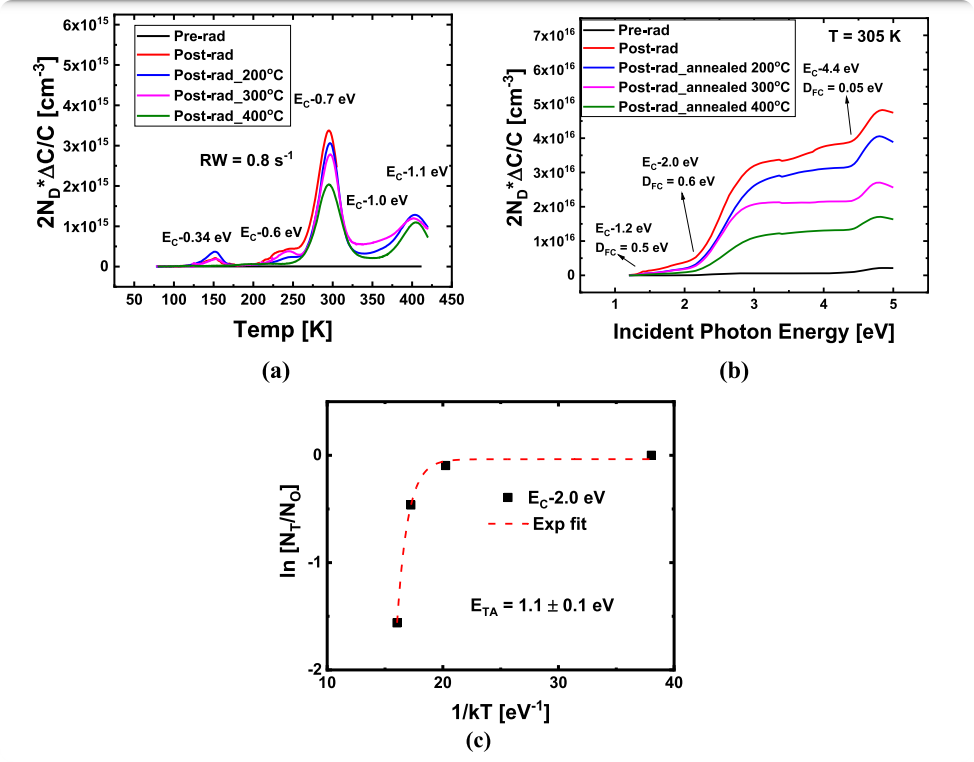
FIG.2 (a) DLTS spectra measured at a rate window of 0.8 s−1. (b) SSPC spectra from DLOS measurements, comparing the conditions before irradiation, after irradiation, and after post-irradiation annealing for 5 min at various temperatures. (c) Trap concentration of the EC−2.0 eV state fitted to the first order reaction kinetics model with a thermal activation energy of 1.1 ± 0.1 eV.
DOI:
doi.org/10.1063/5.0288341
